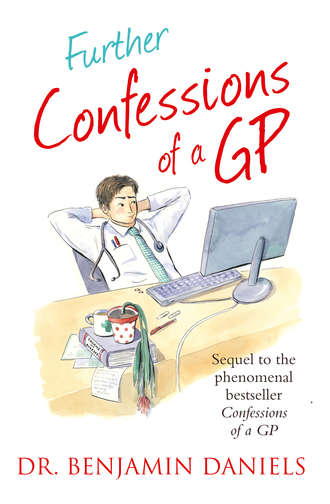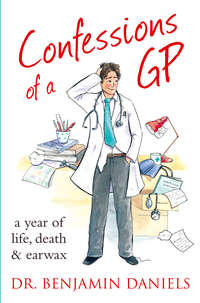
Полная версия
Further Confessions of a GP
I compromise and help Carrie into my room, apologetically upending the poor patient I had been seeing and delaying the remainder of my afternoon surgery. Carrie gets my attention and the appointment she wanted at rapid speed.
Her pseudoseizures also commonly occur when her boyfriend splits up with her or when she has had a big row with her mum. In these situations, the pseudoseizures are a brief and effective distraction from the current unpleasant realities of her life. They also result in her receiving the sort of sympathy and attention that she normally struggles to elicit. Carrie offers plenty for a psychotherapist to get stuck into, but for a lowly GP like me it is just a matter of trying to manage the situation as best as possible in the 10 minutes I have. I do feel sympathetic towards Carrie and hope the psychotherapist I referred her to helps her to manage her symptoms. Having said that, I can’t say there aren’t moments when I wish I had Barry at hand to offer a couple of hard knuckle rubs on her sternum the next time she dramatically collapses in my busy waiting room.
Antibiotic resistance
The national newspapers today are full of reports on the worrying increase in resistance to antibiotics and the potential return to an era when we have no discernible medical treatment to use against severe bacterial infections. The following is how antibiotic resistance was explained to me at medical school. I’m not sure who first came up with the comparison, but the concept can be best explained by thinking in terms of straightforward evolution:
A farmer has a problem with rabbits (think bacteria) eating crops on his field. He employs a few hunting dogs (think antibiotics) to kill the rabbits. Initially it is a great success and the rabbits are almost all gone. The farmer’s crops are growing healthily and the farmer celebrates, assuming that rabbits will never be a problem again. He declares a great victory (think the remarks in the 1940s by doctors who thought that the days of infectious diseases were over). However, not all the rabbits are killed. Like all groups of organisms, there is variety. The few rabbits still alive are the ones that are the fastest and have the best hearing. These rabbits can hear the dogs coming and outrun them. These remaining ‘super rabbits’ breed with each other (like rabbits) and soon all the rabbits on the farm are extra fast and have great hearing. The old hunting dogs can’t kill any of them, so effectively the rabbits have ‘developed resistance’.
The farmer decides to get some new dogs, which are even faster and can hunt very quietly (think newer antibiotics). Initially the new dogs are killing the rabbits despite their speed and good hearing; however, one or two of the rabbits are brown rather than white and the dogs can’t see them very well. These remaining brown rabbits breed with each other and soon all the rabbits are brown and the dogs can’t see them (think super-infections such as MRSA and C. diff). This cycle continues, with the farmer continually trying to adapt his dogs to keep his farm healthy. The rabbits aren’t being cunning or clever. They are simply evolving and reacting to the environment which is being manipulated by the farmer.
The other issue the farmer notices is that the dogs cause other problems. They occasionally kill some of his hens (think unwanted side effects). He also finds that when his dogs have killed lots of the rabbits, there is suddenly more food and space for the mice, so they now flourish. The mice now become pests themselves (think fungal infection such as thrush).
Sometimes the farmer sees that his crops are being eaten and assumes it is the rabbits. In fact, this time it is a caterpillar infestation (think viruses) eating his crops for which the dogs are of absolutely no help. He foolishly sends out his dogs again even though the rabbits aren’t the culprits. The farmer has given himself all the problems that the dogs cause without any of the advantages. This is what happens when we give antibiotics for viral infections such as colds. We cause resistance and inflict side effects without helping clear the infection. After the farmer sends the dogs out, the caterpillars turn into butterflies and fly away leaving the crops to recover. This recovery had nothing to do with the dogs, but foolishly the farmer just sees his crops recuperating and assumes that his dogs are the saviours. He sends out his dogs every time the caterpillars arrive not realising that they are causing more harm than good to a problem that is self-resolving.
Конец ознакомительного фрагмента.
Текст предоставлен ООО «ЛитРес».
Прочитайте эту книгу целиком, купив полную легальную версию на ЛитРес.
Безопасно оплатить книгу можно банковской картой Visa, MasterCard, Maestro, со счета мобильного телефона, с платежного терминала, в салоне МТС или Связной, через PayPal, WebMoney, Яндекс.Деньги, QIWI Кошелек, бонусными картами или другим удобным Вам способом.






